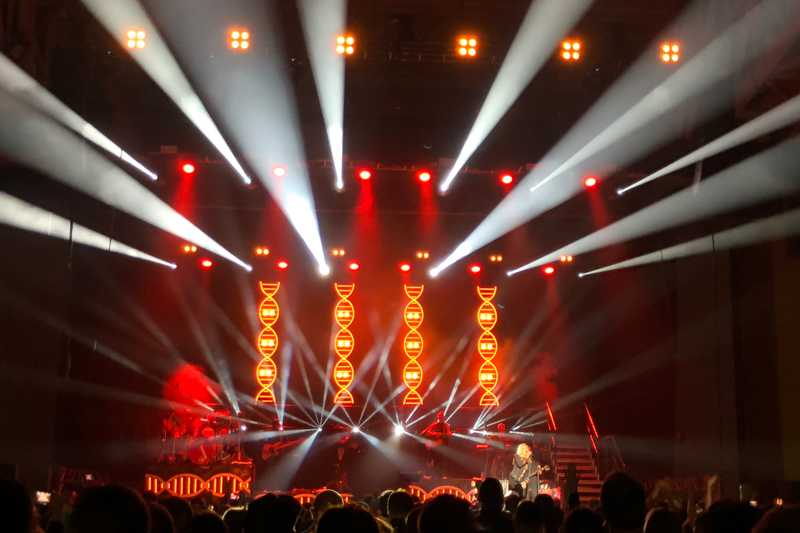ChamSys MagicQ gives flexibility to Anastacia rig
- Details

Like the evolutionary process, Horn’s design has been adaptive, allowing him to maintain the look of his show as the tour moves through a wide variety of venues, often incorporating house lights into its rig. Key to this flexibility has been his ChamSys MagicQ MQ500 Stadium console.
“We started as a full production tour at theatres and small arena venues, then went to a mix of shows, including multi-band festivals this summer, often working with locally supplied rigs,” says Horn of Purple Lighting. My MQ500 has been invaluable in terms of making our show very adaptive, without losing its core identity. We always have the DNA-shaped set pieces on the rear of the set flanked in pixel LED tape with two cell blinders mounted to the back.”
Horn credits the easy morphing and cloning features of the MagicQ MQ500 Stadium with helping him adapt his 22-universe show to different venues. “The quick and easy morphing and cloning are an absolute godsend,” he adds. “Being able to expand palettes, when being presented with a fixture with extra attributes that I don’t already have programmed in existing palettes and cues, is a massive time-saver. I can use the expand palette feature to push new attributes added to a palette to all cues in the show file that have used said palette.
“For example, when moving to a fixture with a second prism controlled by a second channel, it would normally be ignored in cues even when recorded to my prism palette. However, after completing the expand palette process, this is instantly rectified.
“The same goes for when having only recorded RGB values on an LED fixture in my show,” continues Horn. “If I want to use the amber chip on a new fixture after morphing, as only RGB values were present in the cues, it will only look to reference the RGB values stored in the referenced palette. However, by adding the amber attribute values to a palette and then hitting expand, the amber chip will now be used wherever that palette has been used.
“The MQ500 also makes it easy to morph from a mega point to a normal point, even with effects that previously referenced CMY values, it is very quick and easy to edit colour FX to snap rather than fade between colours and easily change the colour palettes being used by the FX rather than re-recording the FX,” continues Horn. “Even on the fly when I miss something, I can quickly jump in and edit the cue, then just as easy view the upcoming cues and edit them without affecting the current output.”
As flexible as it is adaptive, Horn’s lightshow covers a wide range of moods and looks, from dance solos, to soft theatrical moments, to heavy rock with punchy beams, to fun colourful pop.
(Jim Evans)
















